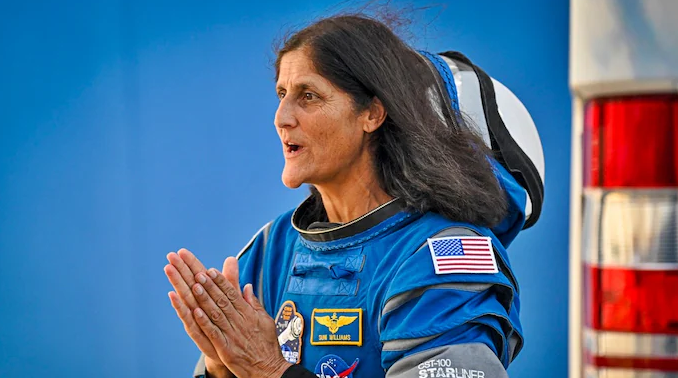Astronaut Sunita Williams Faces New Challenges in Extended Space Mission
 Caroline
Caroline
NASA astronaut Sunita Williams, along with her colleague Butch Wilmore, is confronting significant challenges after their planned return from space was delayed. Initially set to return within a week of their June 5, 2024 launch aboard Boeing's Starliner, the astronauts may now face an extended stay until February 2024.
The change arises from potential issues with the Starliner, leading NASA to consider a return on SpaceX's Crew Dragon. This development could extend their mission from the intended eight days to over eight months, raising concerns about the impact on their health and well-being.
Radiation Exposure Concerns
The International Space Station (ISS) orbits approximately 400 kilometers above Earth, exposing astronauts to higher levels of cosmic radiation than on the ground. Radiation levels in space are up to 30 times higher than those on Earth. Over a week, astronauts encounter radiation equivalent to about one year’s worth on Earth, which can increase their risk of cancer and damage their immune system.
Effects of Microgravity
Extended exposure to microgravity presents additional challenges. Without Earth’s gravity, astronauts experience a loss of bone and muscle mass at a rate of about 1.5% per month, particularly affecting the lower spine, hips, and femurs. This can impair their physical performance and increase the risk of injuries. Additionally, the lack of gravity causes bodily fluids to shift upward, leading to facial puffiness and potential sensory changes.
Psychological Impact
The prolonged mission also poses psychological challenges. Being away from family for an extended period, especially in the isolation of space, can be mentally taxing. The astronauts' spacecraft has reported issues, including a helium leak and unpredictable thruster problems, which add to their stress.
Rescue Options and Hope
Despite these concerns, there are contingency plans. NASA can utilize SpaceX's Crew Dragon for a potential rescue and might seek assistance from the Russian space agency, Roscosmos, though this would involve complex technical and geopolitical negotiations.
Historically, long-duration space missions have been successfully managed. Russian cosmonaut Valeri Polyakov spent 437 consecutive days in space and demonstrated the feasibility of long-term space travel. Williams, orbiting Earth at 27,000 km/h, will experience time slightly slower than those on the ground due to relativistic effects. By the time of her return, she will be just 0.01 seconds younger than someone born at the same time on Earth.
As Williams and Wilmore continue their mission, both their physical resilience and psychological fortitude will be put to the test.
Subscribe to my newsletter
Read articles from Caroline directly inside your inbox. Subscribe to the newsletter, and don't miss out.
Written by

Caroline
Caroline
I’m Caroline, a Ph.D. holder with a passion for journalism.